
Such a tragedy will of course never occur, but the recent feature film of that name might be reflecting my personal reality. Halloween, at least to the extent that I’ve been celebrating it, might well be a thing of the past after this year. The mammoth undertaking of resetting the house and garden for Spooky Season is becoming more difficult every time, and took almost three weeks on this latest round. It’s an “undertaking” I’m not sure I can continue, so in case this year should be the last where I take things to the max, I decided to create a photo record of my efforts on behalf of the ghoulies, ghosties, and things that go bump in the night. Come join me on this “tour de fright.”


As faithful readers will know and attest, I decorate extensively for each season, but Halloween is the biggest. The core of each holiday collection is the tchotchke that sits on the living room bookcase shelves, and I’ll likely continue to do that, come Hades or high water (which is not an idle promise, considering my basement flooding issues). And I have sunk a lot of time and energy into developing the garden installations for Halloween, so those will also likely continue. These two elements alone account for about ten days’ worth of effort, roughly half the total required to do it all.
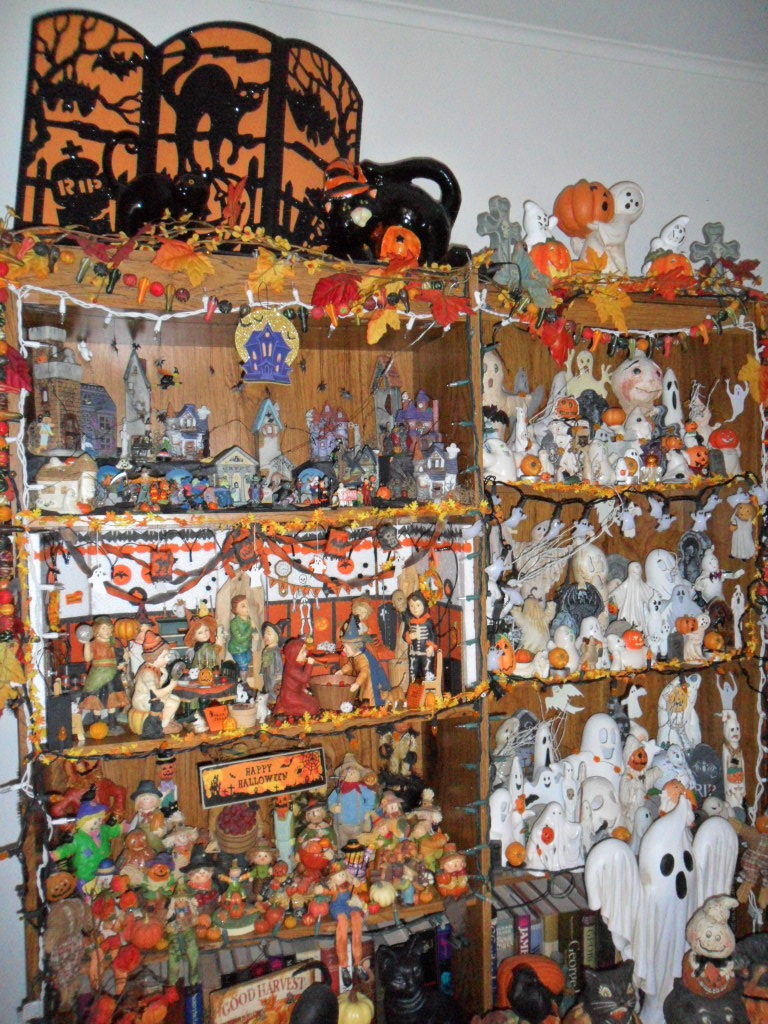
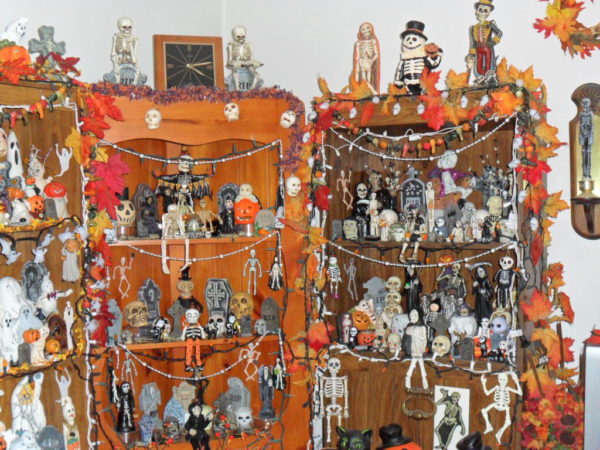
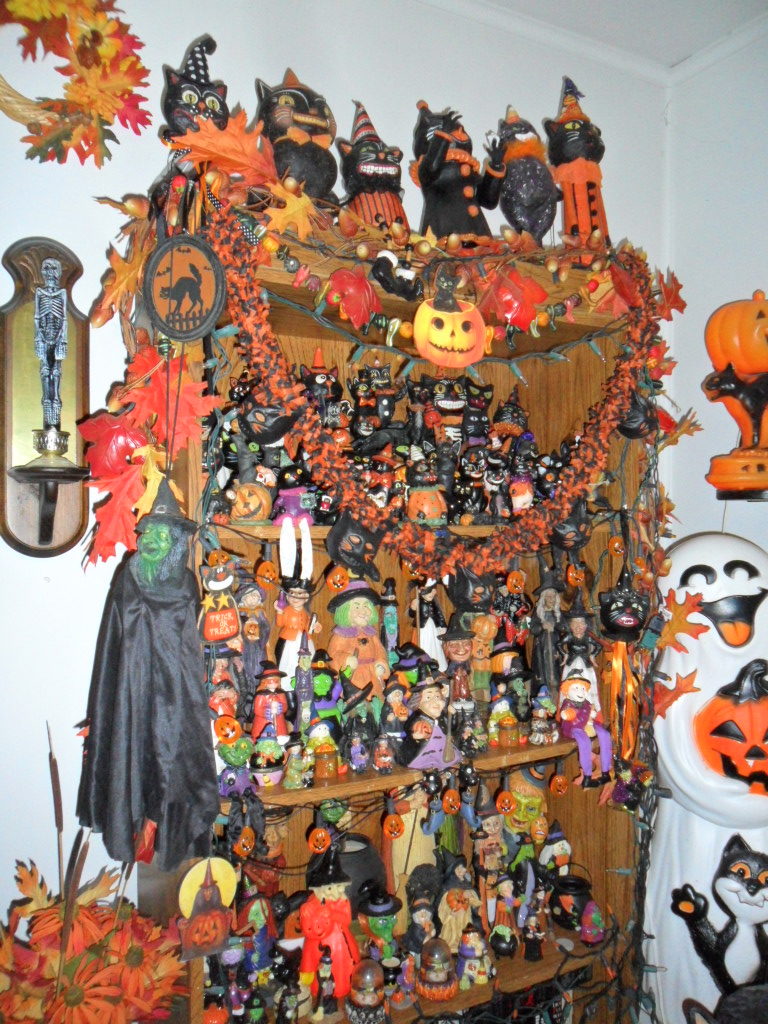
But at this time of year, as at no other, the entire house is plastered with decorations. Every conceivable inch of wall and surface space is covered in emblems of the season, and I have to admit I would miss this frenetic quality if I have to let it go. There’s another week to ten days needed to accomplish this, and that’s the part I may set adrift.

On the shelves, like items are grouped together – skeletons, skulls and reapers in one spot, ghosts in another, witches and cats in a third; vampires beckon from the hallway, headless horsemen cluster on an end table. This brings clarity and focus to what might otherwise seem a very chaotic distribution of material.
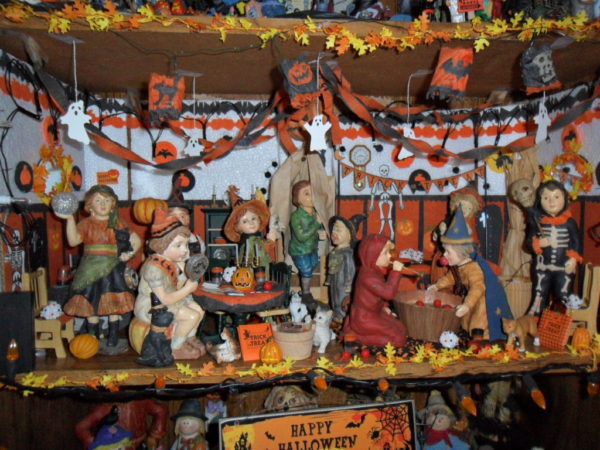
Even at the advanced level of whole-house decorating, the collection is subdivided into centralized theme areas. Most paper or felt elements are concentrated in the kitchen, on walls, cabinets and window treatments. Cardstock images, garlands, mobiles, jointed figures – this collection features many retro images from reprints of paper decorations created by the Beistle company in the 1930s, ‘40s and ‘50s. It’s very nostalgic for me, with some elements reproductions of items I loved in my childhood.
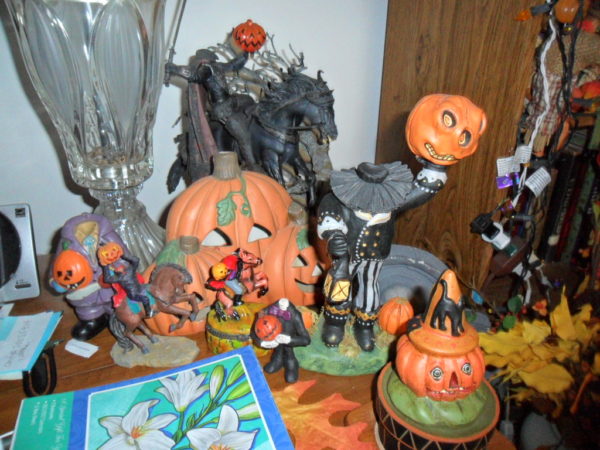

The kitchen is also the home of the “standing wood block” collection, distributed on the window sill and tiny side shelves above the sink. These are distinguished from the “hanging wood block” collection by being fairly hefty and shelf stable, whereas the hangers tend to be lighter with false backs. Also here, on the door to the laundry, is a collection of skeletons and reapers with fabric elements, like clothes or robes, as well as two set pieces with life-size witches, accompanied by their cauldrons, tombstones, cats and potion ingredients.
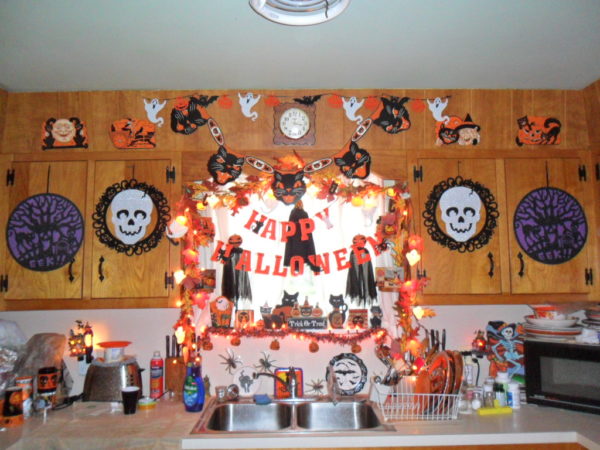
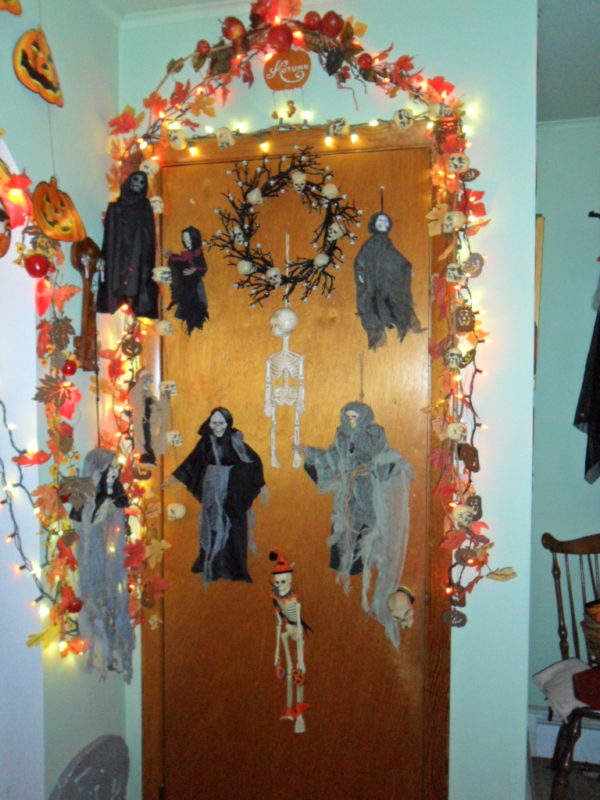
Another selection of stuffed or fabric skeletons and reapers is focused on the coat closet area of the living room, which also features the majority of the linens collection. There are some two dozen Halloween-themed pillows at this point, and I use woven cloth placemats as armrests for the couch and easy chairs (less flexible plastic placemats and tablecloths are reserved for the dining table).
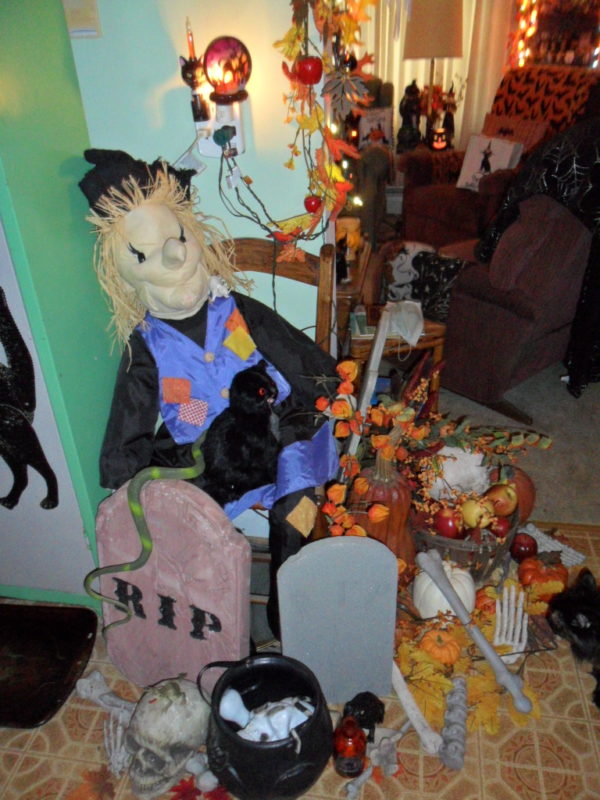

Although sampled throughout the house, the majority of the hanging collection is centered on the stairs and stair landing, the guest room, and the alcove leading to the bathroom. The hall walls, ceiling and bedroom doors giving off them are dominated by bats in every conceivable size and shape, floating above the vampire collection placed on the bookshelf there.

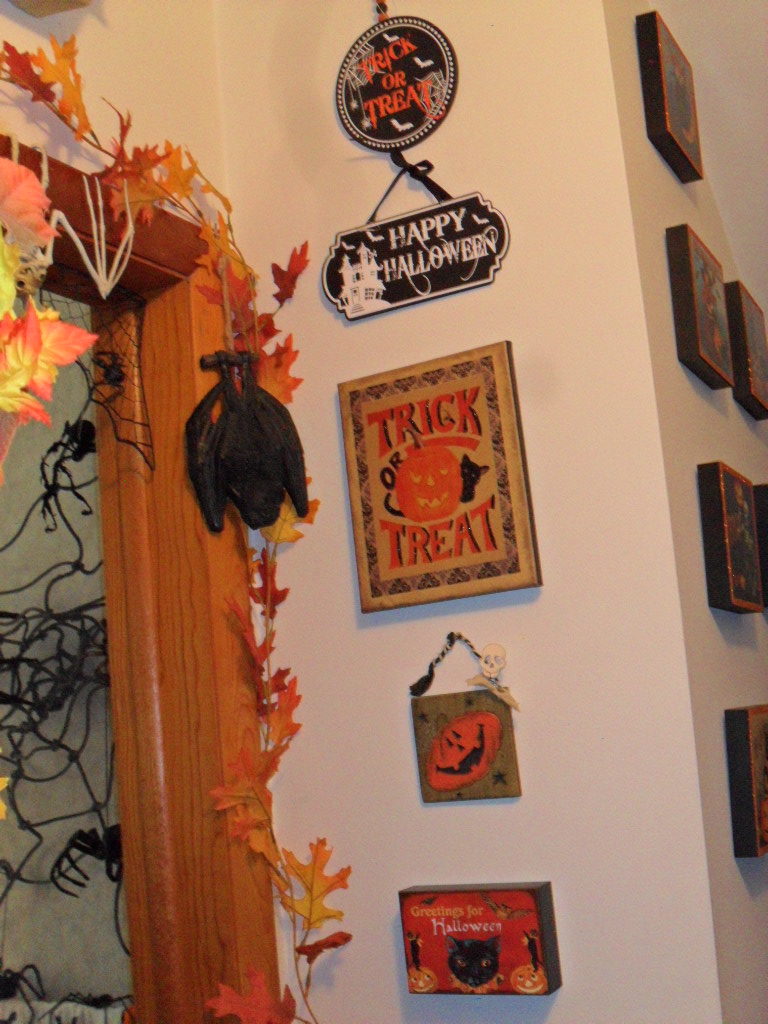
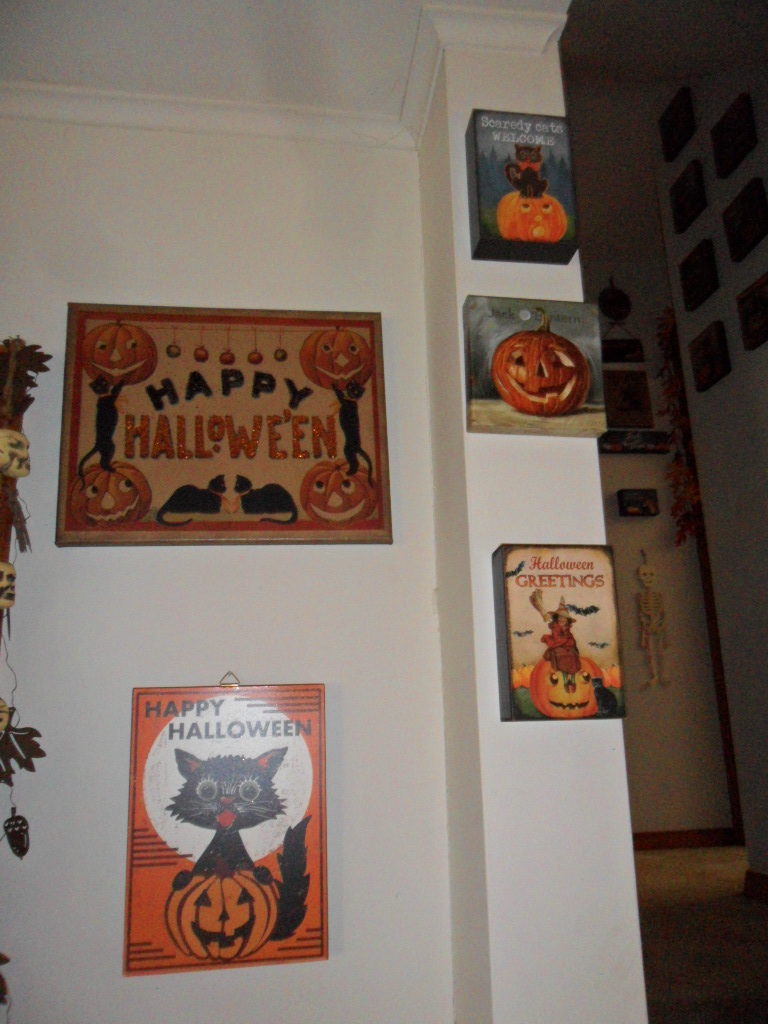
The guest room also houses collections of metal haunted houses, wooden haunted houses, tea light candle holders, and metal trick-or-treat pails, as well as a scattering of Halloween-themed children’s books spread across the cedar chest at the foot of the bed, which is itself occupied by a third life-size witch, napping with her feline familiar (and sometimes with my own cat, Ashes).
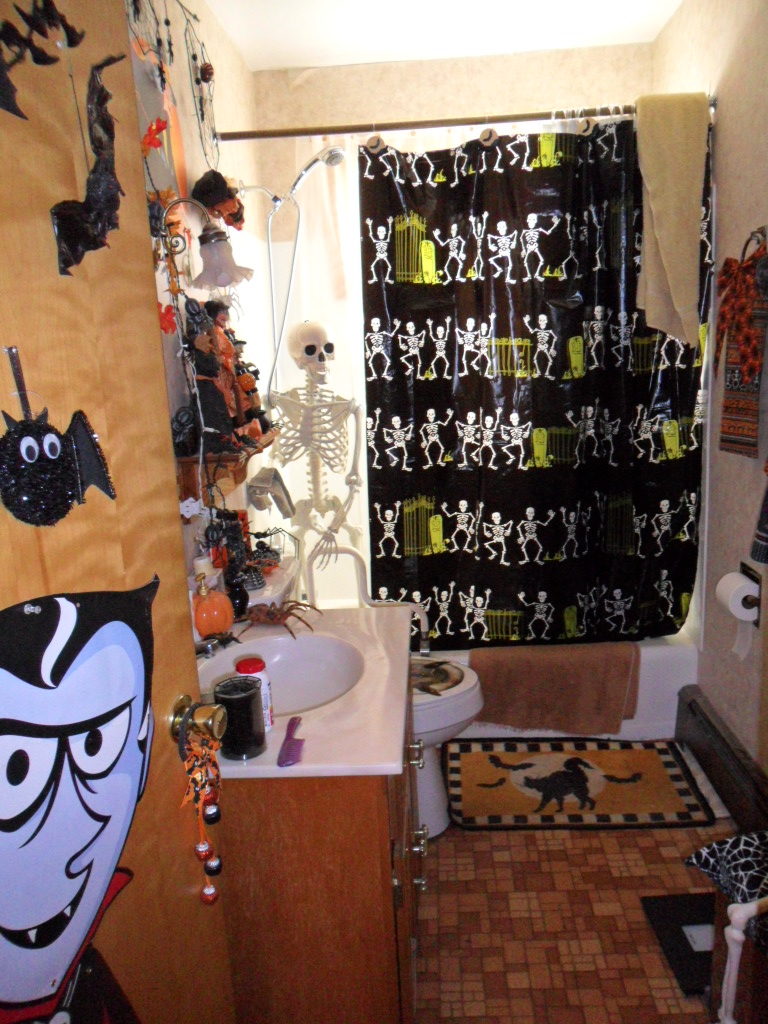

The bathroom is the home of the spider collection, with the walls covered in webbing and arachnids. There’s also a sizeable collection of Halloween-themed lotion pumps on the vanity, and a skeleton peeping out from behind the skeleton-spattered shower curtain, apparently surprised in his ablutions.
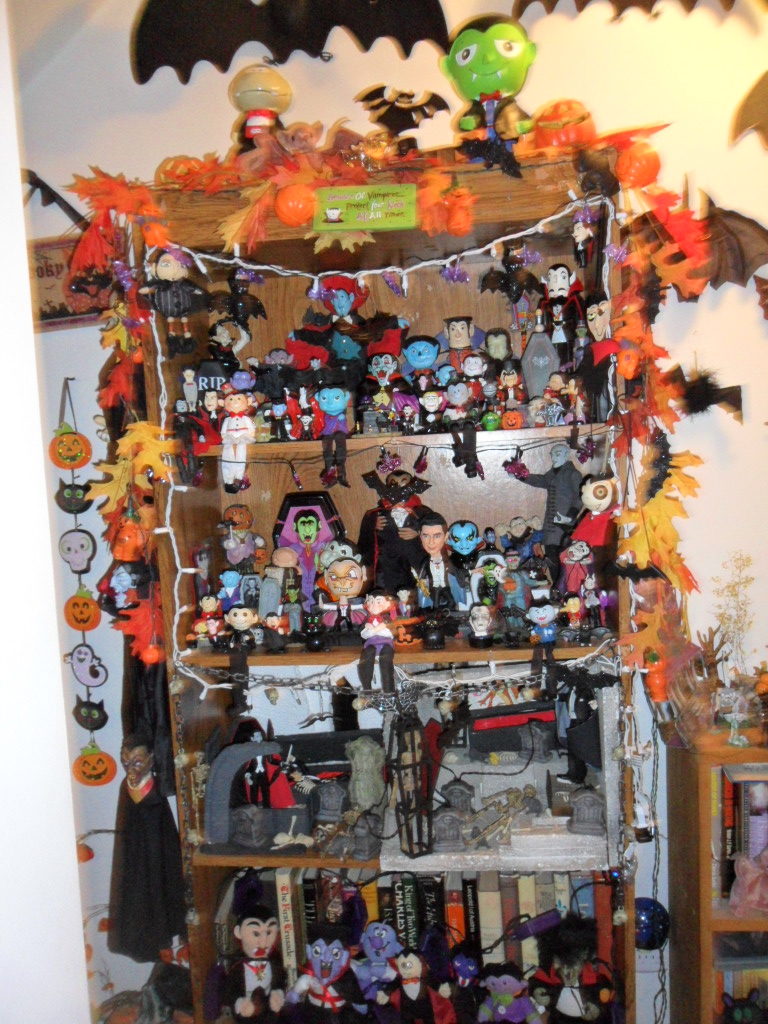
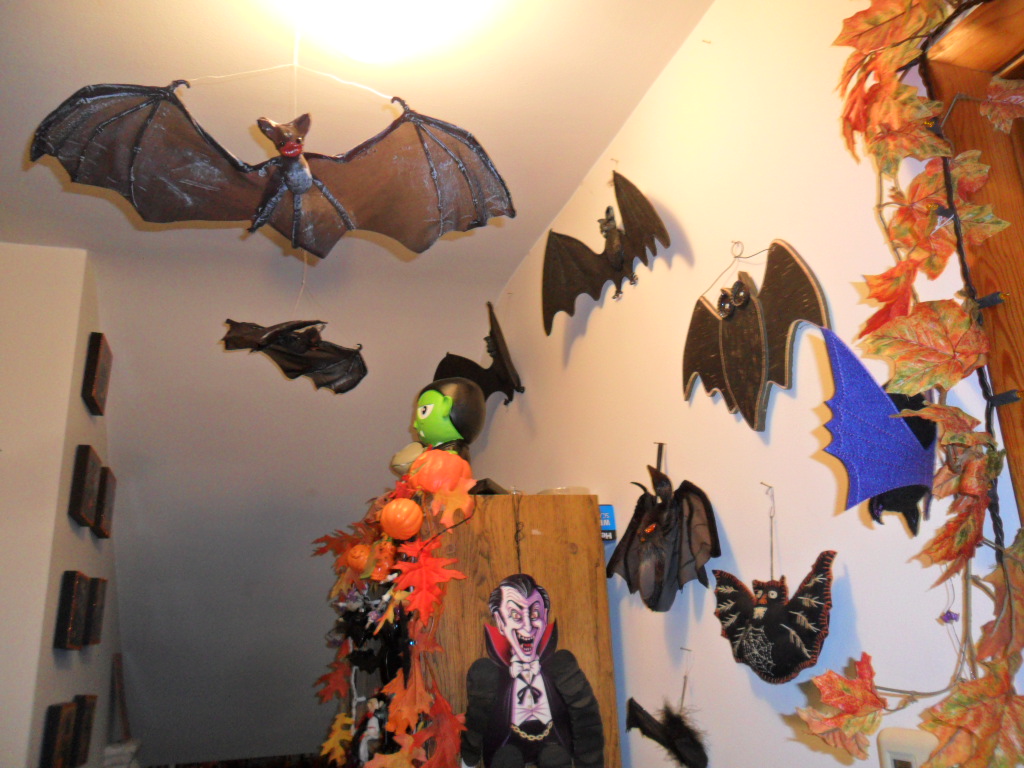
It is these elements and more, peripheral to the collection but an important part of it, which may have to be retired as age and health concerns limit my ability to indulge in the full display annually.

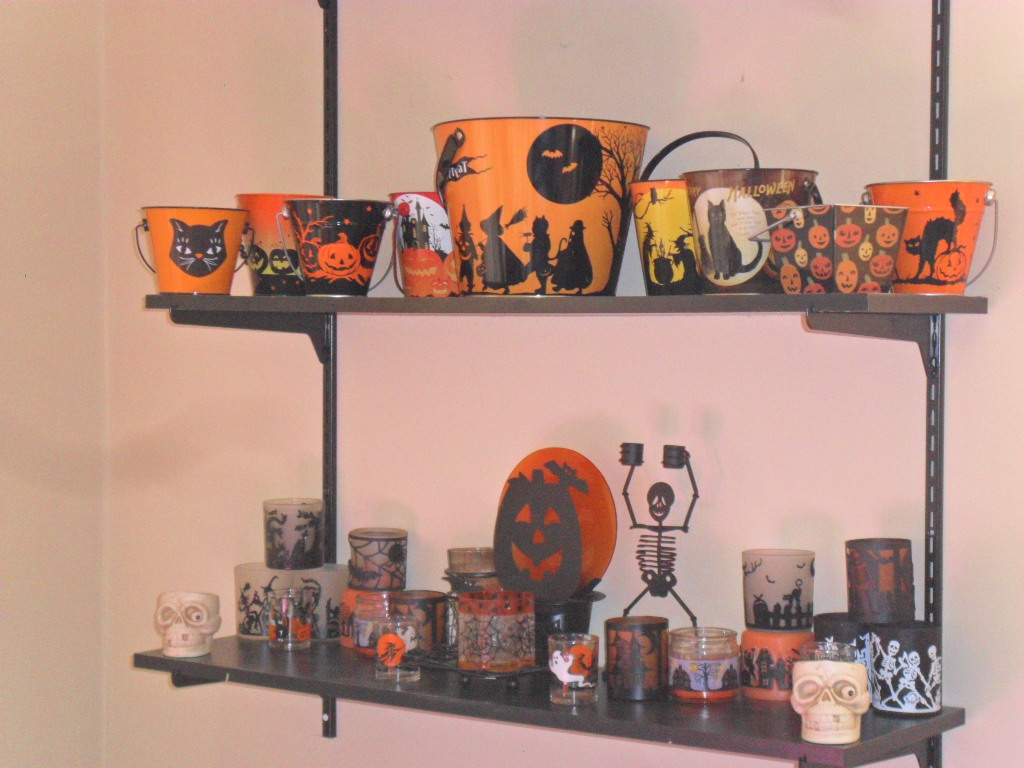
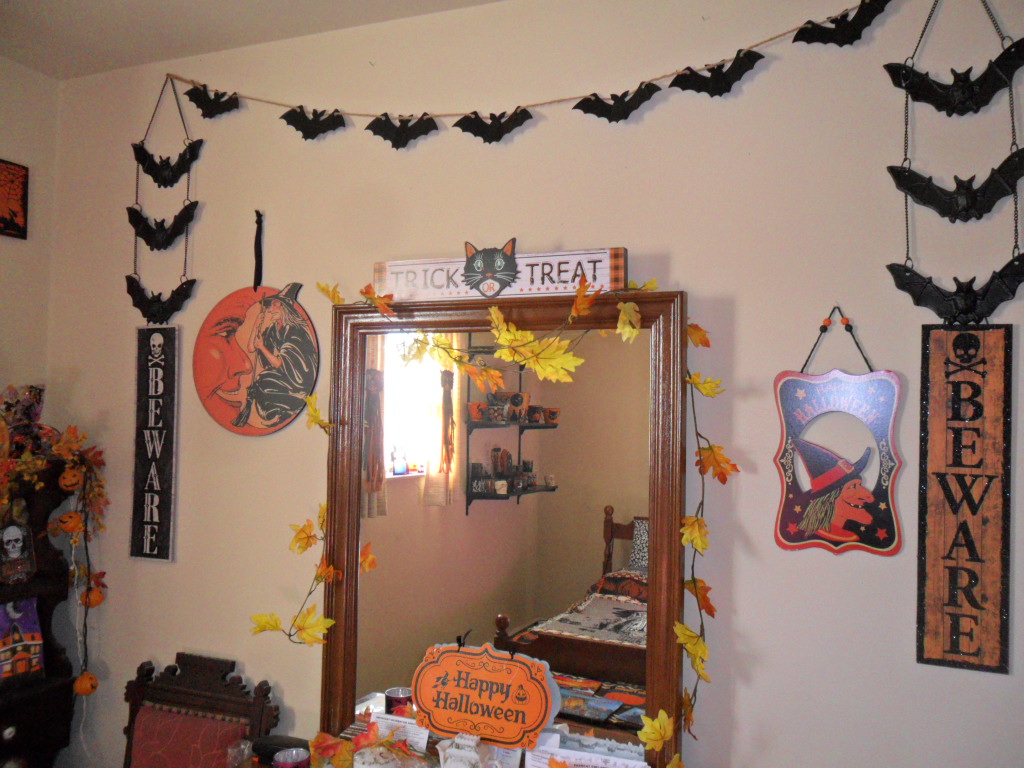
Outside, several vignettes divide the garden into variously themed cemeteries. Many of the tombstones here were made by myself, others have been acquired over thirty years of collecting. Upon entrance past the garden gate with its “Nazareth Necropolis” sign, one encounters an area reserved for markers dedicated to historical personages: Giles Corey, pressed to death for the crime of witchcraft in Salem in 1692; Edgar Allan Poe, America’s first horror writer; Mercy Brown, the reputed “New England Vampire”; and Lizzie Borden, accused axe murderess of “forty whacks” fame.


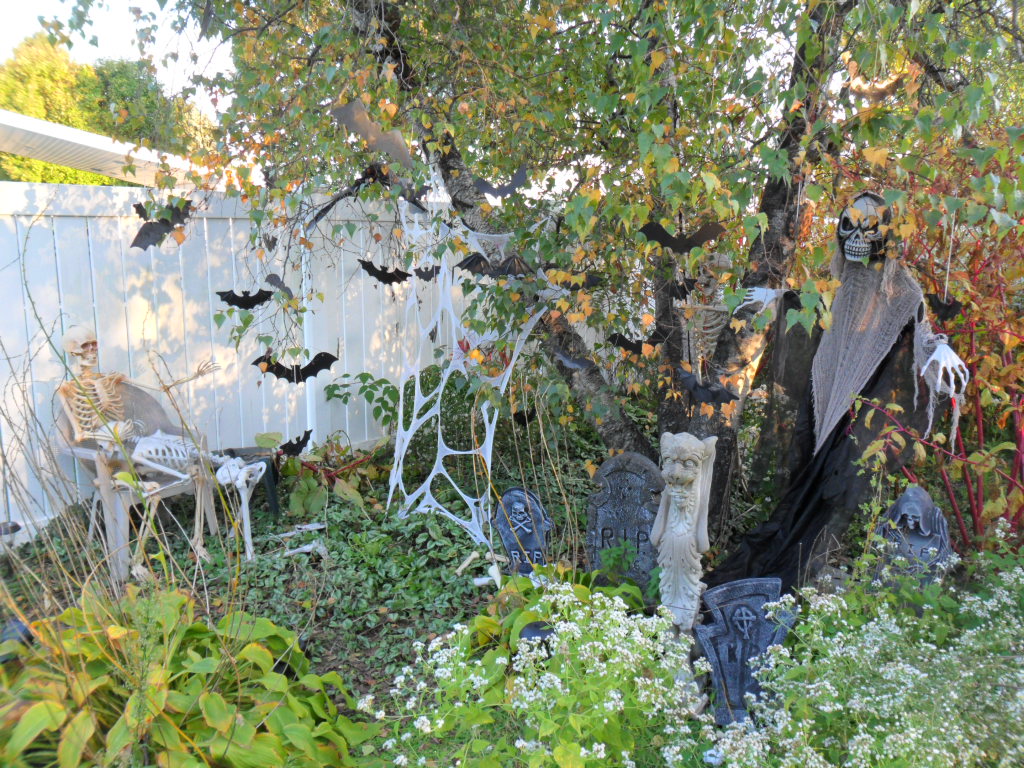
Next is Dead Lovers’ Lane, with a couple caught “in flagrante relicto”, as it were, and a Peeping Tom peering at them through the birch branches, one hand brushing aside the foliage, the other headed for the danger zone. A bevy of bats whirls overhead, while a ghoul, perhaps the spirit of carnality, looks on.



Our next stop is the newest installation, a depiction of skeleton children trick-or-treating. The mistress of the house stands by her back stoop, clad in her witch’s costume, treat bowl at the ready, filled to the brim with mice and spiders for the kiddies. A diminutive ghost reaches for his treat, an impatient devil waits his turn, and a pair of skeleton children dressed as a witch and … a skeleton!? (this child has no imagination!) … stand to one side, inspecting each other’s nightly haul for possible trades of treats.

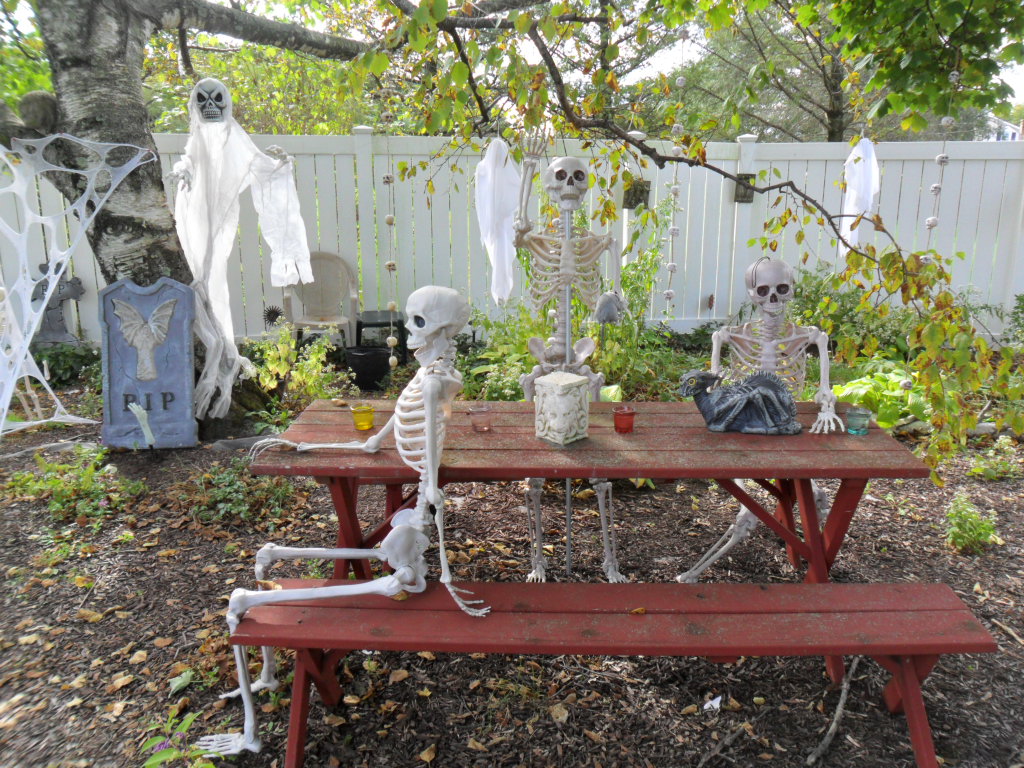
Proceeding to the main cemetery, nominated the “Last Stop”, we find a pair of globe-topped entrance pillars fronting a reaper and ghoul waiting to greet visiting guests and new arrivals. This cemetery has a parklike feel, with three skeletal revelers at a picnic table, petting pet rats and zombie cats, followed by “Dead Mother’s Day”, where a bereaved father annually brings his twin sons to pay respects to his decaying spouse. Also here is a spectral Good Samaritan, helping a friend emerge from the grave. These exhibits lie under the Tree of the Dead, a birch largely denuded of leaves, from which hang strands of skull garlands, swaying mournfully in the breeze.
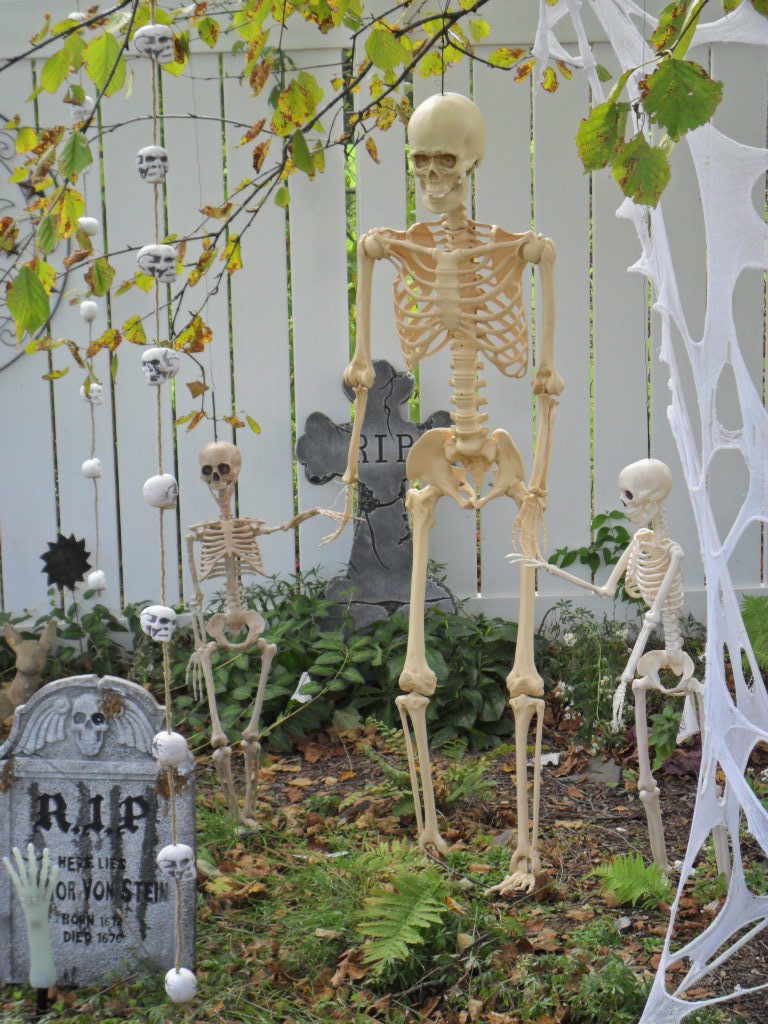

Up on the sandmound hilltop is the quaint Dirt Nap café, where seated patrons sip blood wine al fresco, enjoying their bat’s eye view, served by an obsequious waiter offering refills and a rat amuse bouche. Surrounded by various homemade and hardscape tombstones, and a sepulchral birdbath frequented by ravens, the overgrown, dying garden lends an atmosphere of decay and dereliction to the scene.
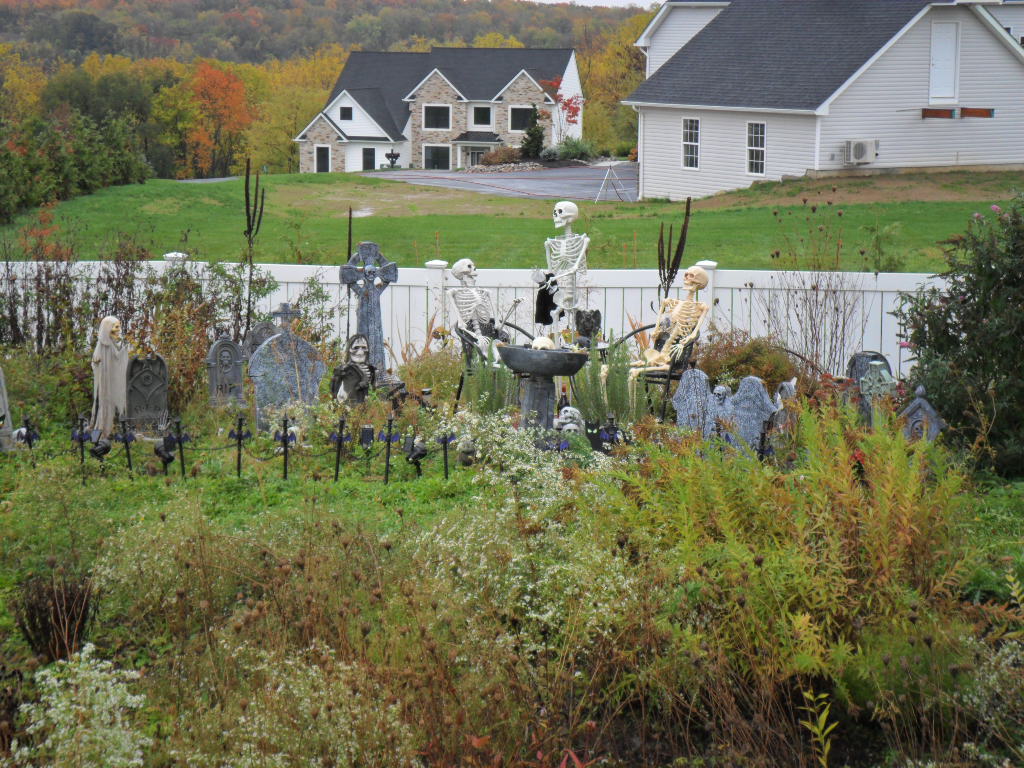
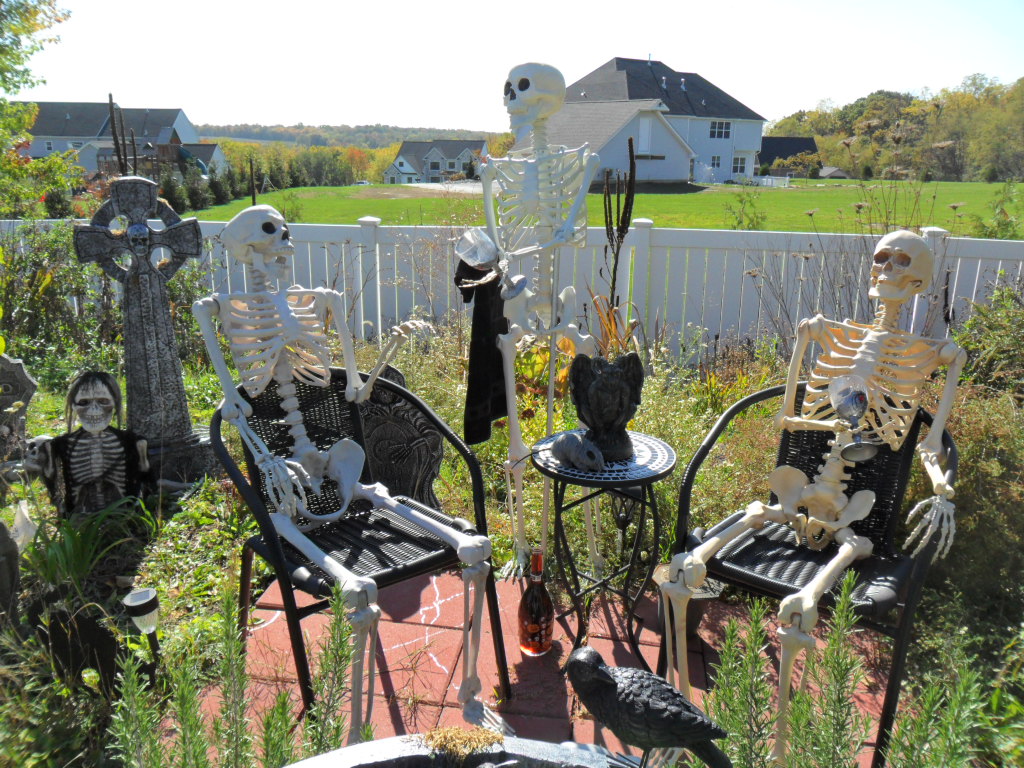
And that brings us to the end of our tour – we hope you’ve enjoyed the sights, and are just dying to come again!
Alex Miller is a professional writer and astrologer, whose website AlexAsteroidAstrology.com offers a trove of info on the role of asteroids in personal and mundane astrology. He is the author of The Black Hole Book (available on Amazon.com) and The Urban Wicca, former editor of “The Galactic Calendar,” and past president of The Philadelphia Astrological Society. His pioneering work with Black Holes in astrological interpretation began in 1991, when his progressed Sun unwittingly fell into one. Alex’s books and writings are available on his website. Alex can also be reached for comment or services at .
Leave a Reply